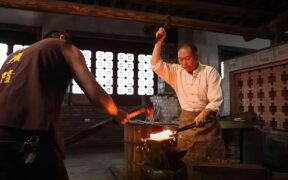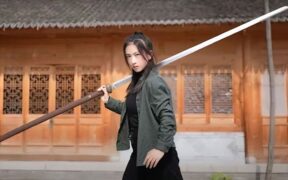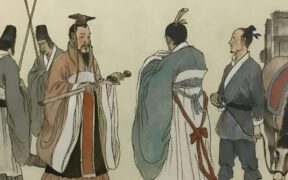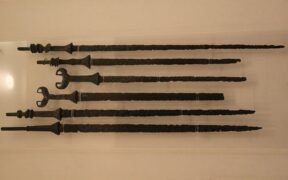Our content features commercial links to our products, committed to transparent, unbiased, and informed editorial recommendations. Learn More
The Storied Heritage of Ancient Chinese Swords
NO AI USED This Article has been written and edited by our team with no help of the AI
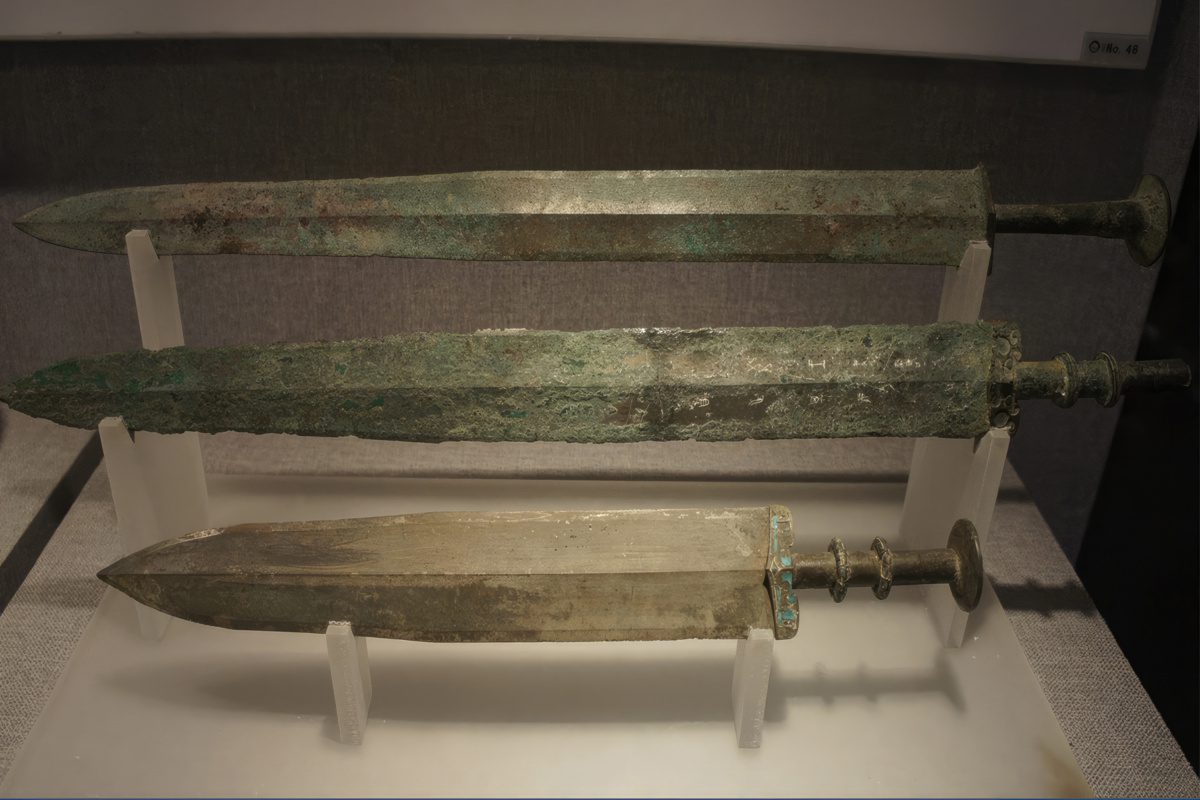
Chinese swords, deeply rooted in the nation’s cultural heritage, have a history spanning thousands of years. In ancient China, they symbolized power and status, elevating the art of sword-making and the esteem of skilled swordsmiths.
This article delves into the evolution of ancient Chinese swords from the Bronze Age to the imperial dynasties, exploring their types, historical progression, and cultural significance.
KEY TAKEAWAYS
- Ancient Chinese swords, originating in the Bronze Age, symbolized status and evolved significantly over time.
- The Jian and Dao, developed in the Warring States and Han Dynasty respectively, represent key advancements in Chinese sword-making.
- Swords in ancient China were both ceremonial and functional, showcasing intricate designs and technological progress.
The Bronze Age: The Emergence of the First Swords in China
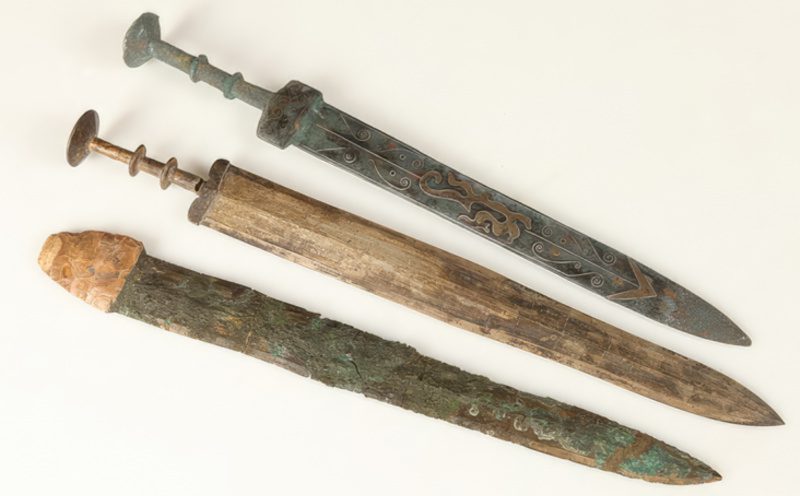
Chinese swords originated around 1600 BC in the Bronze Age, marking a significant development in ancient Chinese civilization with the advent of metalworking.
The earliest bronze swords from the Shang Dynasty were mainly ceremonial, featuring simple designs like straight, single or double-edged blades without guards or handles.
During the Zhou Dynasty, swords evolved to be more intricate and heavier, often adorned with patterns denoting prestige, and began including guards for hand protection.
The Warring States Period: Rise of the Jian
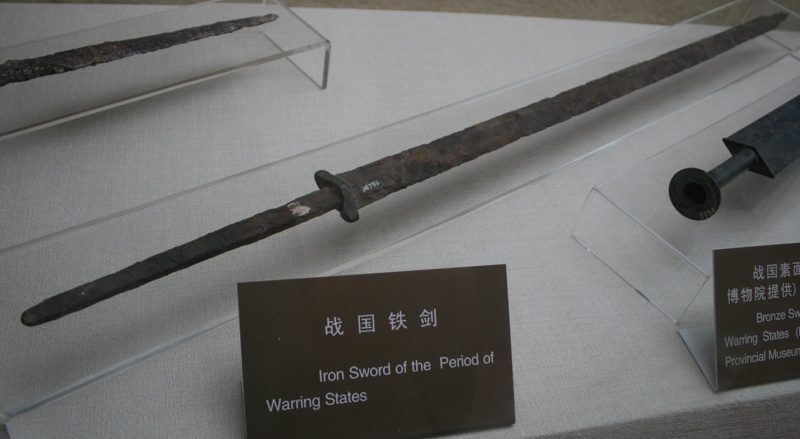
In ancient China’s Warring States period (475-221 BC), intense conflict led to increased sword demand, propelling sword-making forward.
The shift from bronze to iron was pivotal, enhancing the quality of swords. The Jian, previously a ceremonial bronze symbol, transformed into a practical iron weapon.
This transition to iron allowed swordsmiths to craft swords with longer, thinner, and sharper double-edged blades, greatly improving their strength and durability.
Consequently, these improved iron swords became essential in the Chinese army, marking a significant evolution in Chinese weaponry.
The Han Dynasty: Introduction of the Dao
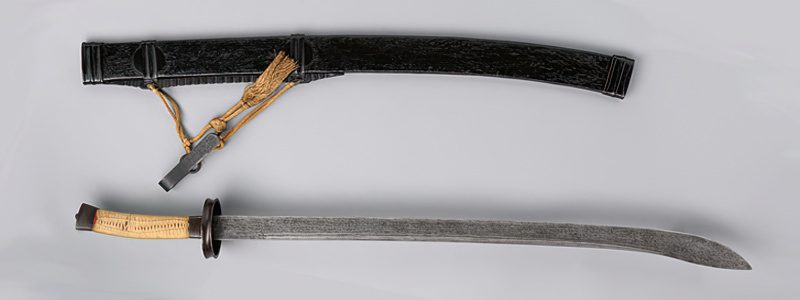
During the Han Dynasty (206 BC – 220 AD), Chinese sword-making saw significant advancements. This period marked the specialization of swordsmithing, with swords becoming symbols of status and power.
The Jian evolved further, incorporating Damascus steel and intricate designs. Meanwhile, the Dao, or Chinese broadsword, emerged as a key weapon.
This single-edged, curved sword, preferred by infantry and cavalry, was designed for cutting and chopping, reflecting a blend of artistry and functionality in Chinese weapons of this era.
The Tang Dynasty: The Pinnacle of Sword Making in China
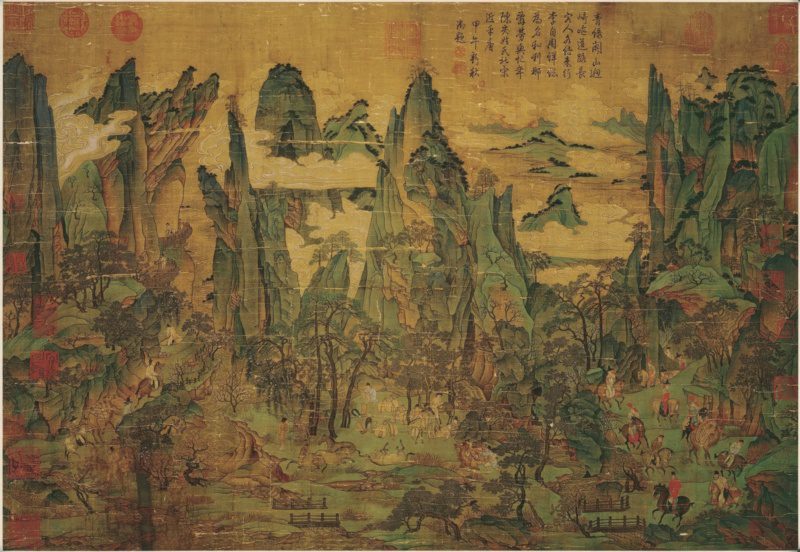
Characterized by benevolent governance, strong international ties, and economic growth, the period of the Tang Dynasty (618 – 906 AD) is considered to be the “golden age” of Chinese arts and culture.
From swords to axes and polearms, weapon crafting reached its peak during this time, and Chinese swords became world-famous for their beauty, durability, and power.
Amongst these swords, the Jian River sword stands out as the most remarkable. It was a double-edged sword believed to have been capable of slashing both a horse and its rider in two with a single strike.
The Song Dynasty: Origin of the Qiang
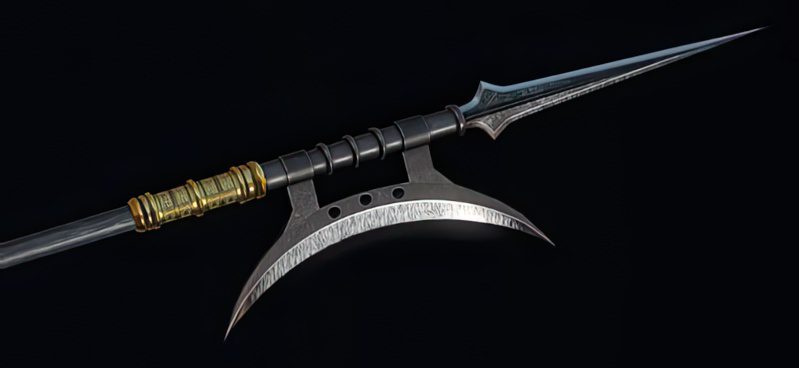
During the Song Dynasty (960 – 1279 AD), the Chinese continued to hone their sword-making technology and produced various types of weapons.
Amongst the development of the preexisting jian and dao swords, this time period also witnessed the introduction of the Qiang (枪).
The Qiang was a spear with a sword-like blade on one end which was often used for cutting and slashing. It had a reputation for being particularly strong and long-lasting since it was constructed from high-carbon steel.
The Ming and Qing Dynasties: The Era of the Dao
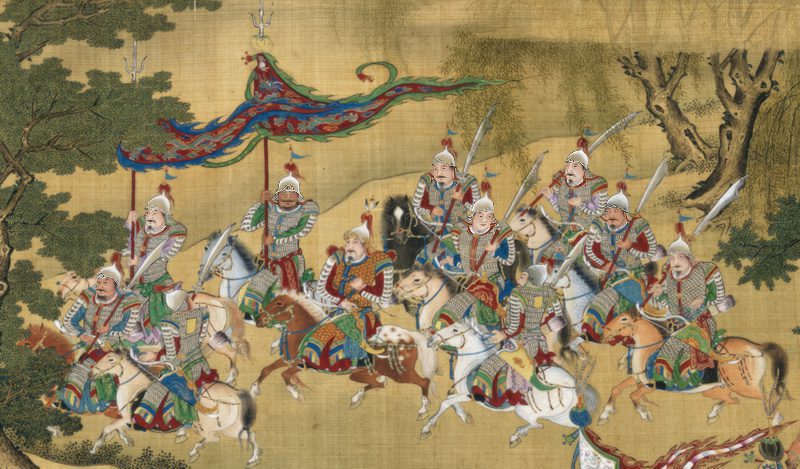
The period between 1368 AD to 1912 AD was filled with many conflicts between the last two imperial dynasties of China.
With decades-long constant warfare between the two as well as internal turmoil in the royal councils, the use of swords in combat slowly declined as militaries began adopting firearms.
Regardless, swordsmiths continued to develop their craft and new models of the dao, such as the Liuyedao (柳叶刀) and the Niuweidao (牛尾刀) were introduced.
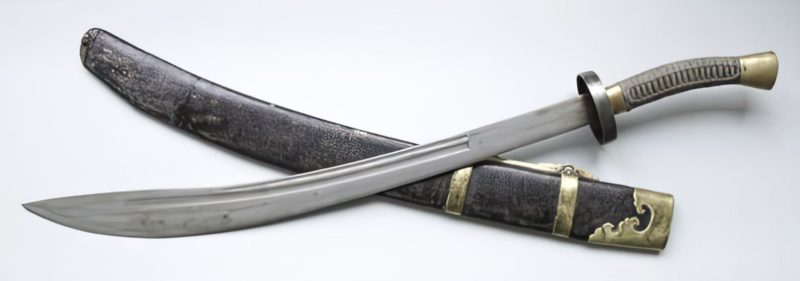
The Niuweidao, which translates to Ox-tailed sword, was considered a civilian’s weapon since it was never officially issued to military personnel. It was a heavy, single-edged sword that featured a flared tip and was predominantly used for martial arts.
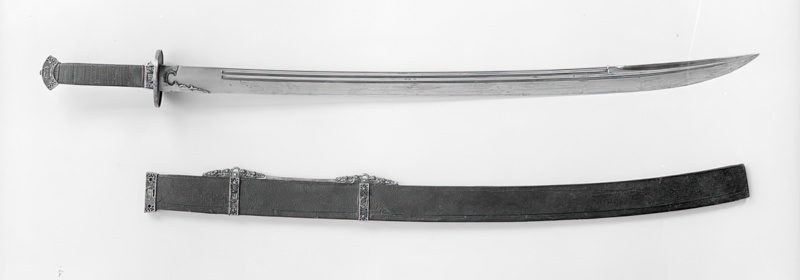
The Liuyedao, also known as the Willow Leaf Saber, is considered to be the official replacement for the long sword since it originated during the late years of the Ming Dynasty when curved swords were preferred by the cavalry.
Sticking to the root design of the dao swords, it had a single-edge blade and was slightly shorter in order to be comfortably wielded with one hand.
As a result, the quality of Chinese swords diminished and their use eventually reverted to that of the Bronze Age, where they would serve as tokens of prestige and valor, most often used by high-ranking officials in ceremonies.
Notable Ancient Chinese Swords
Chinese swords are divided into two separate categories depending on the craftsmanship.
Jians which are double-edged and strictly straight swords and daos which are slightly shorter single-edged swords that, depending on the historic period they are from, can be either straight or curved.
Within these categories, there are a number of noteworthy battle-ready swords which have left their mark on history.
Sword of Goujian

The Goujian Sword (越王勾践剑) is one of the earliest known jian swords and is commonly attributed to Goujian, one of Yue’s final emperors during the Spring and Autumn period.
It is a double-edged tin bronze sword with a distinctive pattern on the blade. The sword is well-known for its sharpness and longevity, as well as its elaborate design and elegant handle.
The sword of Goujian was discovered in 1965 during an archeological survey in the Hubei province and it’s considered to be the world’s best-preserved sword.
Today, it is recognized as a national treasure in China and is housed in the Hubei Provincial Museum in Wuhan.
Gong Sword
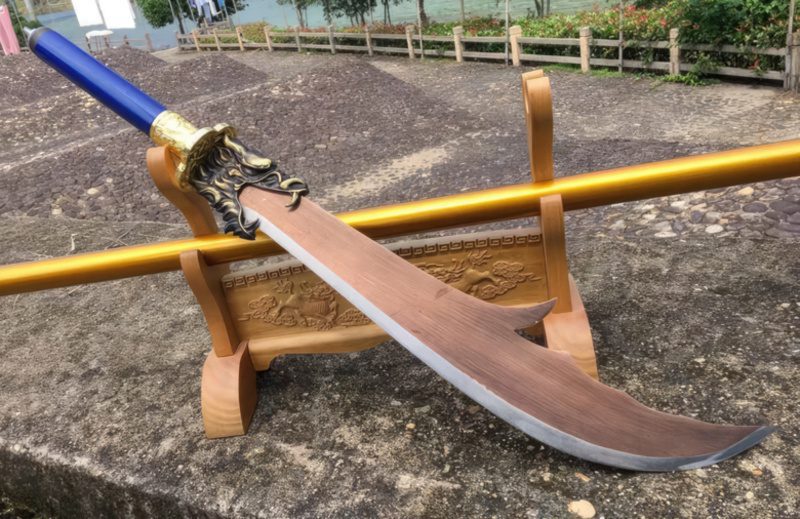
The Gong Sword was a heavy, short sword with a blunt edge and a curved blade. It was frequently used by soldiers to breach enemy walls and was mostly used for crushing and pounding.
It also featured a detachable mechanism and an absence of a pommel, allowing a pole to attach at the end of the hilt to greatly increase its range and serve as a halberd.
Ge Sword
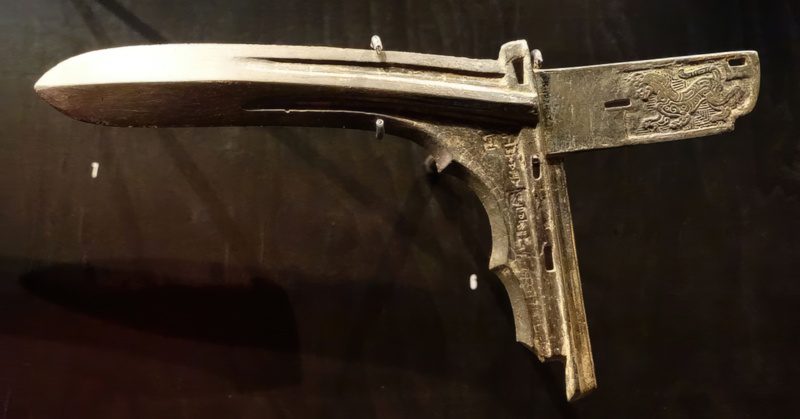
The Ge sword was a type of dagger that had a short, single-edged blade that was curved for thrusting and stabbing. It was a favorite weapon of assassins and ninjas and was frequently employed in close-quarters battles.
Fu Sword

The Fu sword was a type of a dao sword that had a single edge and was long and curved; it was made for long-distance slashing and thrusting. Due to its length and mobility during combat, it was frequently employed by cavalry warriors.
Wushu Sword
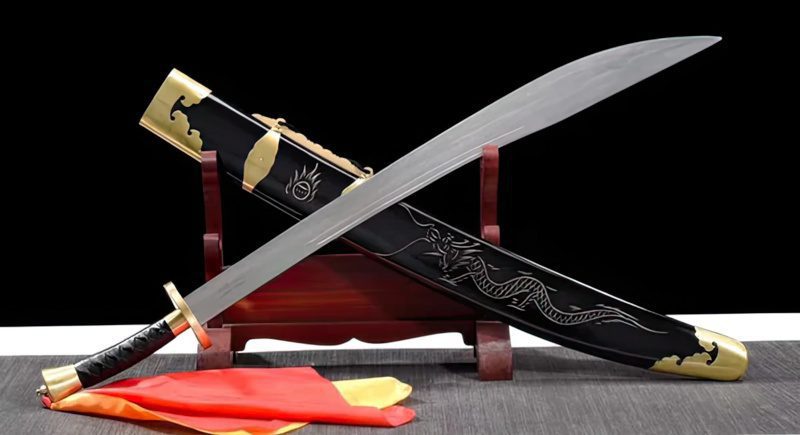
A straight, double-edged blade that has been meticulously manufactured for optimum strength and sharpness is the typical feature of the Wushu sword. A Wushu sword’s hilt is normally constructed of wood or metal and is frequently decorated with elaborate patterns. The Wushu sword is used in a variety of Wushu forms and techniques.
Han Jian Sword

One of the most well-known swords from the Han Dynasty is the Han Sword, a jian that was found in the tomb of the Han Prince Liu Sheng in 1968. The iron sword’s blade is decorated with elaborate patterns including clouds, dragons, and phoenixes. The sword’s handle and sheath were crafted from priceless materials like gold, silver, and jade, and they were embellished with intricate designs and artwork.
